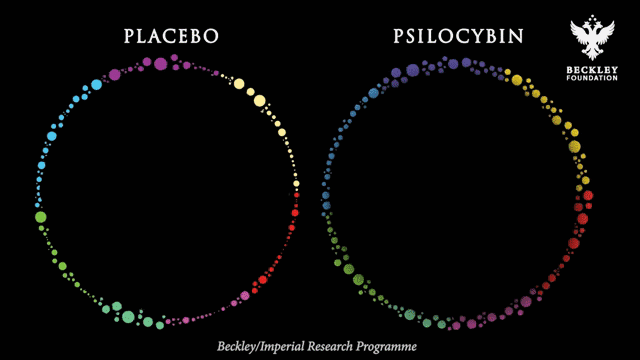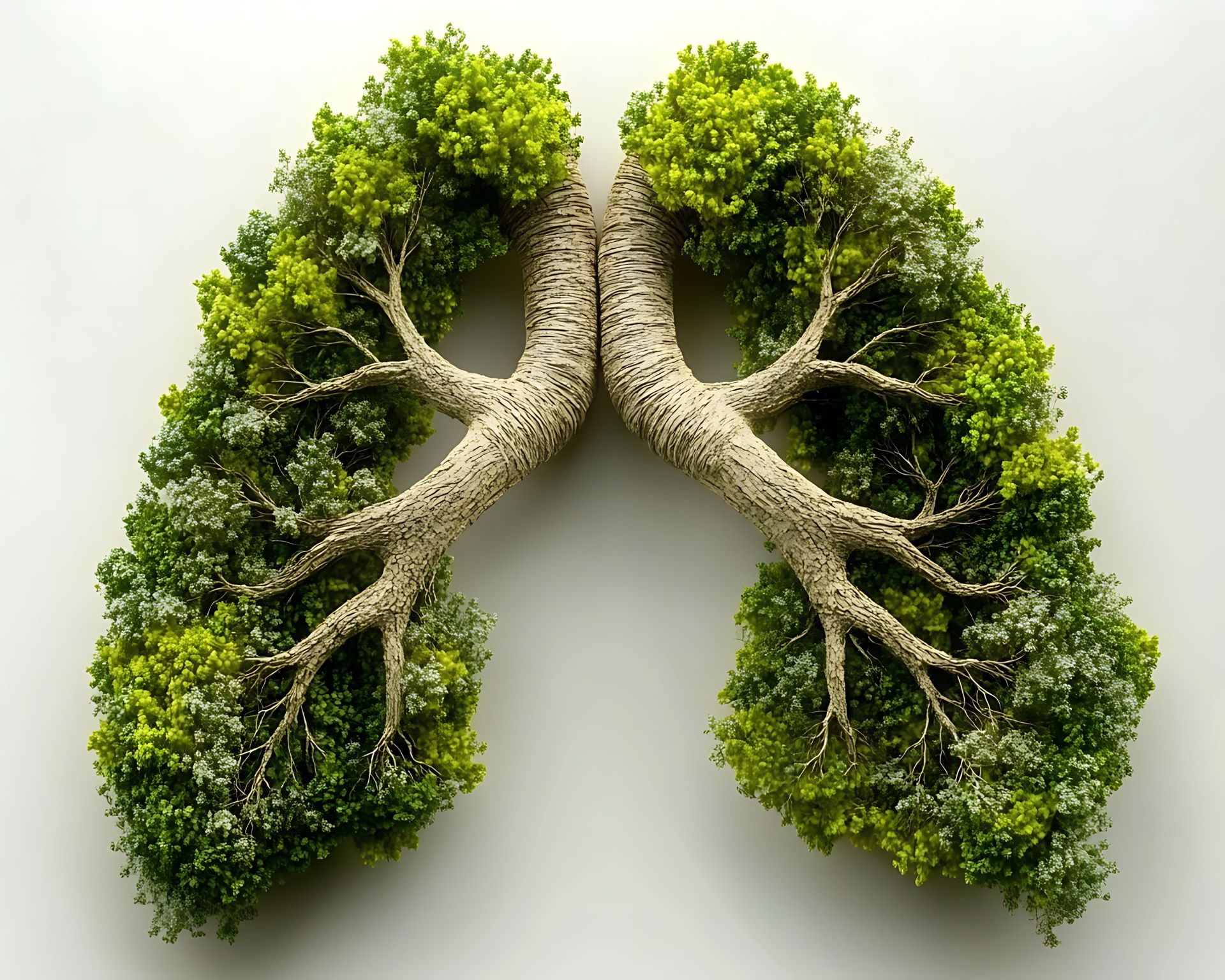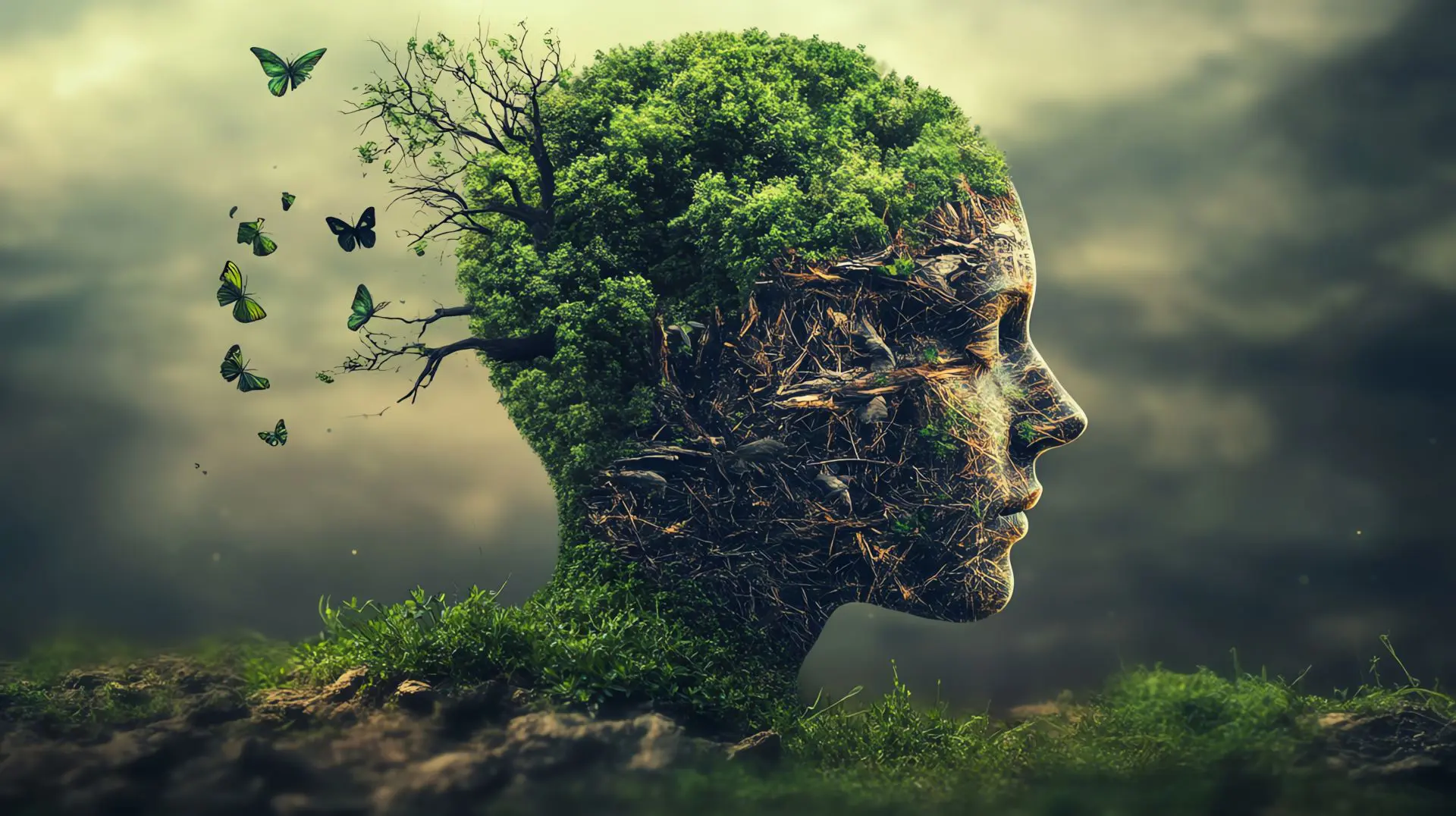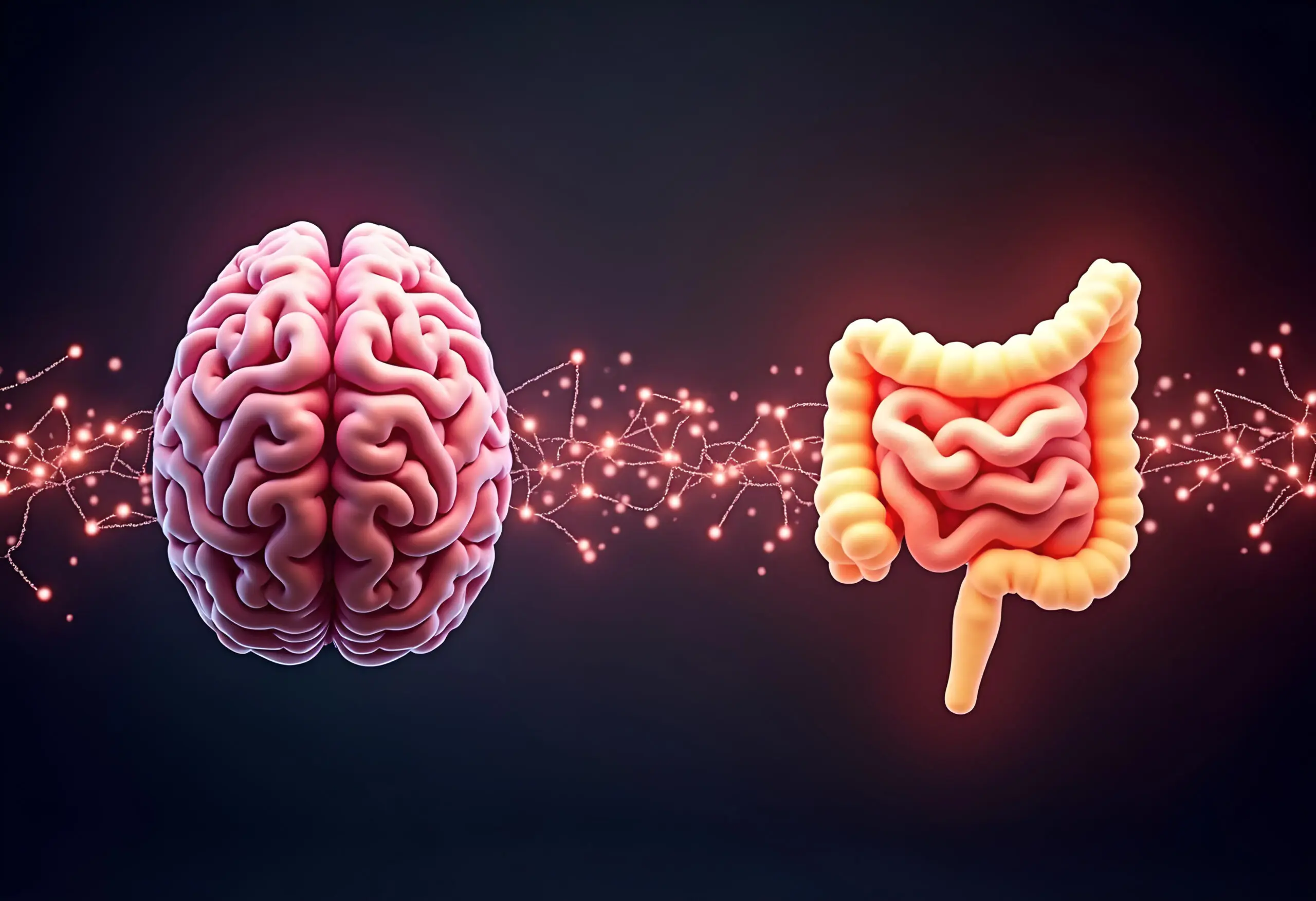
Magic Mushrooms Effects on Brain: The Neuroscience of Psilocybin
What is psilocybin?
Psilocybin, the active ingredient in magic mushrooms & truffles, has been used for centuries in traditional spiritual practices. These powerful fungi first came to the attention of the West in 1957 after an American amateur mycologist took part in a traditional mushroom ceremony in Mexico. The chemical psilocybin was first isolated the following year by Albert Hofmann, the same scientist who discovered LSD. Ever since, science has been fascinated by the effects of mushrooms on the brain.
The promise of psilocybin
In recent years, there has been a surge of interest in psilocybin as a potential treatment for mental health issues [1]. The excitement around its clinical potential has gone along with research into the mechanisms of the effects of mushrooms on the brain. Beyond its clinical use, many see great potential for mushrooms to help with “the betterment of the well”, as it is capable of occasioning powerful personal transformation in individuals with no diagnosed clinical issues [2].
Psilocybin works at the psychological level in multiple ways. It has been found to temporarily alter one’s sense of self, creating opportunities to shed outdated limiting beliefs that no longer serve the individual [3]. It also puts one into a state where insight is more likely to occur, shifting our perspective and allowing novel connections to be made. While it has powerful psychological effects, psilocybin itself is a chemical that acts directly on the brain. How does psilocybin alter brain activity to produce such profound psychological changes? Read on to learn about psilocybin and the brain.
How Does Psilocybin Work In The Brain
When a person consumes a drug, it enters the brain via the bloodstream. Then, the molecules of the drug attach to specific chemical receptors on brain cells. When it comes to the neuroscience of psilocybin, this results in changes in the electrical activity of these cells. Not every brain cell possesses the same chemical receptors, however. As a result, different chemicals change the activity of different groups of brain cells, resulting in distinct effects.
The shape of the psilocybin molecule is similar to the shape of the serotonin molecule, a related substance which occurs naturally in your nervous system. Serotonin controls the activity of brain circuits involved in mood and feelings of satisfaction [4]. The cells in these circuits have specialized receptors that serotonin can activate. When you take psilocybin, it is these serotonin receptors that are activated, as a result of psilocybin’s structural similarity to serotonin.
Your brain on psilocybin
When ingested, psilocybin is converted into psilocin, the compound responsible for the psychedelic effects of magic mushrooms. Research has found that psilocin produces its mind-altering effect by interacting with serotonin 2A receptors [5]. The chemical name of serotonin is 5-hydroxytryptamine (5HT) so these receptors are commonly called 5HT2A receptors.
By binding to the 5-HT2A receptors, psilocybin activates a cascade of neural activity in the brain, leading to changes in perception and thought patterns. This alteration in activity in certain regions of the brain, such as the default mode network, is thought to be responsible for the psychedelic effects of psilocybin on the brain.

Default Mode Network and Psychedelic Effects
The default mode network (DMN) is a network of brain regions that are active when the brain is at rest, or not focused on a specific task. This network is involved in a range of functions, including self-reflection, mind wandering, and mental time travel (thinking about the past or the future).
Research has shown that psilocybin can disrupt the activity of the DMN, leading to changes in perception and thought patterns [6]. Specifically, psilocybin decreases activity in the medial prefrontal cortex (mPFC) and the posterior cingulate cortex (PCC), two key regions of the DMN. This disruption of the DMN is thought to lead to the ego-dissolving effects of mushrooms, in which individuals experience a loss of self-identity and a feeling of oneness with the universe. This can be a profound and transformative experience.
Relaxing big-picture beliefs
While our sense of self can feel very solid in everyday life, it is actually a highly complex and flexible story that we tell ourselves. People do not typically feel that their sense of self is exactly equivalent to their physical body, as what makes us who we are radiates out into our relationships with other people, our beliefs about ourselves, and our dreams and aspirations. The DMN weaves together a self-image out of all of this information to create a coherent sense of who you are. Your sense of self is an idea or belief that your brain forms, not a solid thing with its own independent existence [7]. It is not a simple or narrow belief however, it is a complex, big-picture belief that integrates everything about you.
By temporarily reducing activity in the DMN, psilocybin inhibits this neural network’s ability to create our sense of self [8]. The story we subconsciously tell ourselves about who we are is based on past information, information that may no longer be relevant. As a result, the psilocybin experience of psychedelic mushrooms creates an opportunity to update one’s beliefs about oneself and the wider world. An overly pessimistic worldview due to past challenges in life can be let go of, for example, and gratitude for one’s life in the present can take over.
The big-picture beliefs that are created by the DMN have an outsized influence in how the brain operates in daily life. If we have low self esteem, for example, we have a negative big-picture belief of ourselves, one that can’t coexist with more specific positive beliefs about ourselves. We may dismiss a complement as insincere, for example, so we can keep this overarching negative narrative together. We hold onto negative beliefs like this because the brain is primarily concerned with keeping us safe, even if that negatively impacts our wellbeing. Psilocybin creates opportunities to move past these coping mechanisms in situations where they no longer serve us. This is considered one of the most positive effects of magic mushrooms.
With the authoritarian grip of the DMN and these big-picture beliefs relaxed, small things in the present moment can have a greater impact [9]. Perhaps it’s a beautiful day or you are suddenly struck by the astoundingly complex patterns of nature. In such states we can be freed up from our survival instincts to come into a state of gratitude, awe, and appreciation for our situation.
Brain entropy
As the brain forms specific beliefs, it becomes less flexible, sinking more and more into habitual patterns. This is efficient for survival but can leave us stuck in a rut. The opposite of this rigid order is known as “entropy”. Mushroom increase brain entropy, allowing the brain to function in more flexible and innovative ways [10]. This process is characterized by more brain areas communicating with each other than usual, leading to interesting synesthetic experiences [11], such as seeing music for example, and an increase in creative thinking [12]. Such a state is ideal for promoting insight.
A widely used analogy for how psilocybin acts in the brain comes from psychedelic researcher Robin Carhart-Harris [13]. We can think of our habitual patterns of behavior as being like the grooves that a skier leaves in the snow after each run. With each repetition the grooves get deeper and it becomes harder and harder for the skier to choose a different route. Psilocybin acts like a layer of fresh snow, opening up opportunities for new ways to be and behave. The grooves are still there under the fresh layer of snow, however. Without intentional integration of the insights from the psilocybin experience we’re likely to end up back in the same grooves, following the same old habits. With wise integration, however, psilocybin gives us the opportunity to get out of these ruts and lay down more positive tracks for us to follow.
Plasticity
Finally, psilocybin increases neuroplasticity, the brain’s ability to change itself and set down new patterns. By affecting neuroplasticity, mushrooms can lead to long-term changes that are associated with positive outcomes. For example, research has shown that psilocybin can increase the number of new neurons in the brain, a process called neurogenesis [14]. Neurogenesis has been linked to improved learning and memory [15]. Psilocybin neuroscience has also been found to increase the number of connections between neurons, which can improve the brain’s ability to process information [16].
Safety
Physiologically, psilocybin has been found to be incredibly safe. In fact its toxicity is less than a cup of coffee, which is to say it is effectively non-existent [17]. It appears to be impossible to come to physiological harm through taking an overdose of psilocybin. Psychologically, it is wise to take psilocybin in a safe and supported environment so no volatile external factors can disrupt your experience, as can happen with recreational use. It is important to note that psilocybin can interact with selective serotonin reuptake inhibitor (SSRI) medications, as they both act on the same system in the brain..
Conclusion
The neuroscience of psilocybin is a rapidly evolving field, with new research continually shedding light on how this compound interacts with the brain to produce its effects. At this stage, we know that psilocybin acts on the serotonin system, resulting in the disruption of the DMN that creates our sense of self. As a result, our sense of self can become altered, producing mystical experiences of union with the rest of reality. In this state where the DMN is no longer suppressing and dismissing information that doesn’t fit with its pre-existing beliefs about yourself and the world, it becomes possible to let go of outdated beliefs that no longer serve you. Such a state also creates the opportunity for insight and creative thinking by connecting brain areas that usually do not speak to each other. The increased flexibility and plasticity of the brain under psilocybin makes it possible for individuals to identify how they want to make change and to make the change stick by laying down new connections in the brain. The profound effects of psilocybin mushrooms give this substance unparalleled potential as a tool for personal transformation.
References:
[1] Johnson, Matthew W., and Roland R. Griffiths. “Potential Therapeutic Effects of Psilocybin.” Neurotherapeutics 14, no. 3 (July 1, 2017): 734–40. https://doi.org/10.1007/s13311-017-0542-y.
[2] Søndergaard, Anna, Martin Korsbak Madsen, Brice Ozenne, Sophia Armand, Gitte Moos Knudsen, Patrick MacDonald Fisher, and Dea Siggaard Stenbæk. “Lasting Increases in Trait Mindfulness after Psilocybin Correlate Positively with the Mystical-Type Experience in Healthy Individuals.” Frontiers in Psychology 13 (2022). https://www.frontiersin.org/articles/10.3389/fpsyg.2022.948729.
[3] Griffiths, R. R., W. A. Richards, U. McCann, and R. Jesse. “Psilocybin Can Occasion Mystical-Type Experiences Having Substantial and Sustained Personal Meaning and Spiritual Significance.” Psychopharmacology 187, no. 3 (August 1, 2006): 268–83. https://doi.org/10.1007/s00213-006-0457-5.
[4] Mohammad-Zadeh, L. F., L. Moses, and S. M. Gwaltney-Brant. “Serotonin: A Review.” Journal of Veterinary Pharmacology and Therapeutics 31, no. 3 (2008): 187–99. https://doi.org/10.1111/j.1365-2885.2008.00944.x.
[5] Madsen, Martin K., Patrick M. Fisher, Daniel Burmester, Agnete Dyssegaard, Dea S. Stenbæk, Sara Kristiansen, Sys S. Johansen, et al. “Psychedelic Effects of Psilocybin Correlate with Serotonin 2A Receptor Occupancy and Plasma Psilocin Levels.” Neuropsychopharmacology 44, no. 7 (June 2019): 1328–34. https://doi.org/10.1038/s41386-019-0324-9.
[6] Carhart-Harris, Robin L., Robert Leech, David Erritzoe, Tim M. Williams, James M. Stone, John Evans, David J. Sharp, Amanda Feilding, Richard G. Wise, and David J. Nutt. “Functional Connectivity Measures After Psilocybin Inform a Novel Hypothesis of Early Psychosis.” Schizophrenia Bulletin 39, no. 6 (November 1, 2013): 1343–51. https://doi.org/10.1093/schbul/sbs117.
[7] Metzinger, Thomas. The Ego Tunnel: The Science of Mind and the Myth of the Self. Basic Books, 2009.
[8] Davey, Christopher G., Jesus Pujol, and Ben J. Harrison. “Mapping the Self in the Brain’s Default Mode Network.” NeuroImage 132 (May 15, 2016): 390–97. https://doi.org/10.1016/j.neuroimage.2016.02.022.
[9] Carhart-Harris, R. L., and K. J. Friston. “REBUS and the Anarchic Brain: Toward a Unified Model of the Brain Action of Psychedelics.” Edited by Eric L. Barker. Pharmacological Reviews 71, no. 3 (July 1, 2019): 316–44. https://doi.org/10.1124/pr.118.017160.
[10] Carhart-Harris, Robin, Robert Leech, Peter Hellyer, Murray Shanahan, Amanda Feilding, Enzo Tagliazucchi, Dante Chialvo, and David Nutt. “The Entropic Brain: A Theory of Conscious States Informed by Neuroimaging Research with Psychedelic Drugs.” Frontiers in Human Neuroscience 8 (2014). https://www.frontiersin.org/articles/10.3389/fnhum.2014.00020.
[11] Brogaard, Berit, and Dimitria Electra Gatzia. “Chapter 83 – Psilocybin, Lysergic Acid Diethylamide, Mescaline, and Drug-Induced Synesthesia.” In Neuropathology of Drug Addictions and Substance Misuse, edited by Victor R. Preedy, 890–905. San Diego: Academic Press, 2016. https://doi.org/10.1016/B978-0-12-800212-4.00083-2.
[12] Mason, N. L., K. P. C. Kuypers, J. T. Reckweg, F. Müller, D. H. Y. Tse, B. Da Rios, S. W. Toennes, P. Stiers, A. Feilding, and J. G. Ramaekers. “Spontaneous and Deliberate Creative Cognition during and after Psilocybin Exposure.” Translational Psychiatry 11, no. 1 (April 8, 2021): 1–13. https://doi.org/10.1038/s41398-021-01335-5.
[13] “Psilocybin Points to the ‘Snow Globe’ Theory of Shaken-up Consciousness.” Church of the Churchless. Accessed March 24, 2023. https://hinessight.blogs.com/church_of_the_churchless/2019/01/psilocybin-points-to-the-snow-globe-theory-of-consciousness.html.
[14] Catlow, Briony J., Ahmad Jalloh, and Juan Sanchez-Ramos. “Chapter 77 – Hippocampal Neurogenesis: Effects of Psychedelic Drugs.” In Neuropathology of Drug Addictions and Substance Misuse, edited by Victor R. Preedy, 821–31. San Diego: Academic Press, 2016. https://doi.org/10.1016/B978-0-12-800212-4.00077-7.
[15] Trouche, Stéphanie, Bruno Bontempi, Pascal Roullet, and Claire Rampon. “Recruitment of Adult-Generated Neurons into Functional Hippocampal Networks Contributes to Updating and Strengthening of Spatial Memory.” Proceedings of the National Academy of Sciences of the United States of America 106, no. 14 (April 7, 2009): 5919–24. https://doi.org/10.1073/pnas.0811054106.
[16] Shao, Ling-Xiao, Clara Liao, Ian Gregg, Pasha A. Davoudian, Neil K. Savalia, Kristina Delagarza, and Alex C. Kwan. “Psilocybin Induces Rapid and Persistent Growth of Dendritic Spines in Frontal Cortex in Vivo.” Neuron 109, no. 16 (August 18, 2021): 2535-2544.e4. https://doi.org/10.1016/j.neuron.2021.06.008.
[17] Passie, Torsten, Juergen Seifert, Udo Schneider, and Hinderk M. Emrich. “The Pharmacology of Psilocybin.” Addiction Biology 7, no. 4 (2002): 357–64. https://doi.org/10.1080/1355621021000005937.


